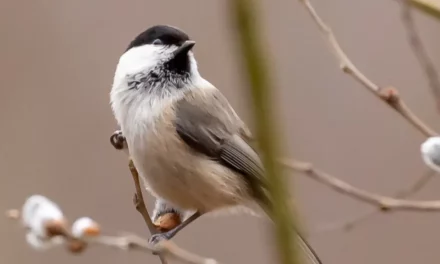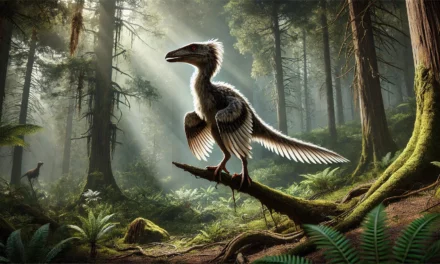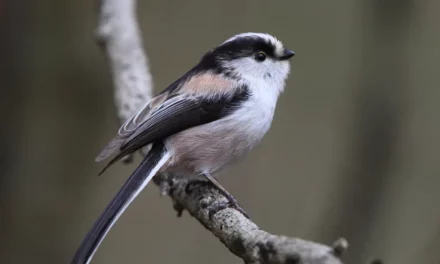What does the White Wagtail look like?
The White Wagtail is a small bird with a striking appearance. Its black and white head contrasts with a gray back, while the belly is white, adorned with a distinct black bib at the chest. Juveniles have less distinct colors, appearing paler overall. This bird's most recognizable feature is its long black and white tail, which it wags frequently, giving it its name. Slightly larger than a sparrow, the White Wagtail’s graceful form makes it easy to identify in the wild.
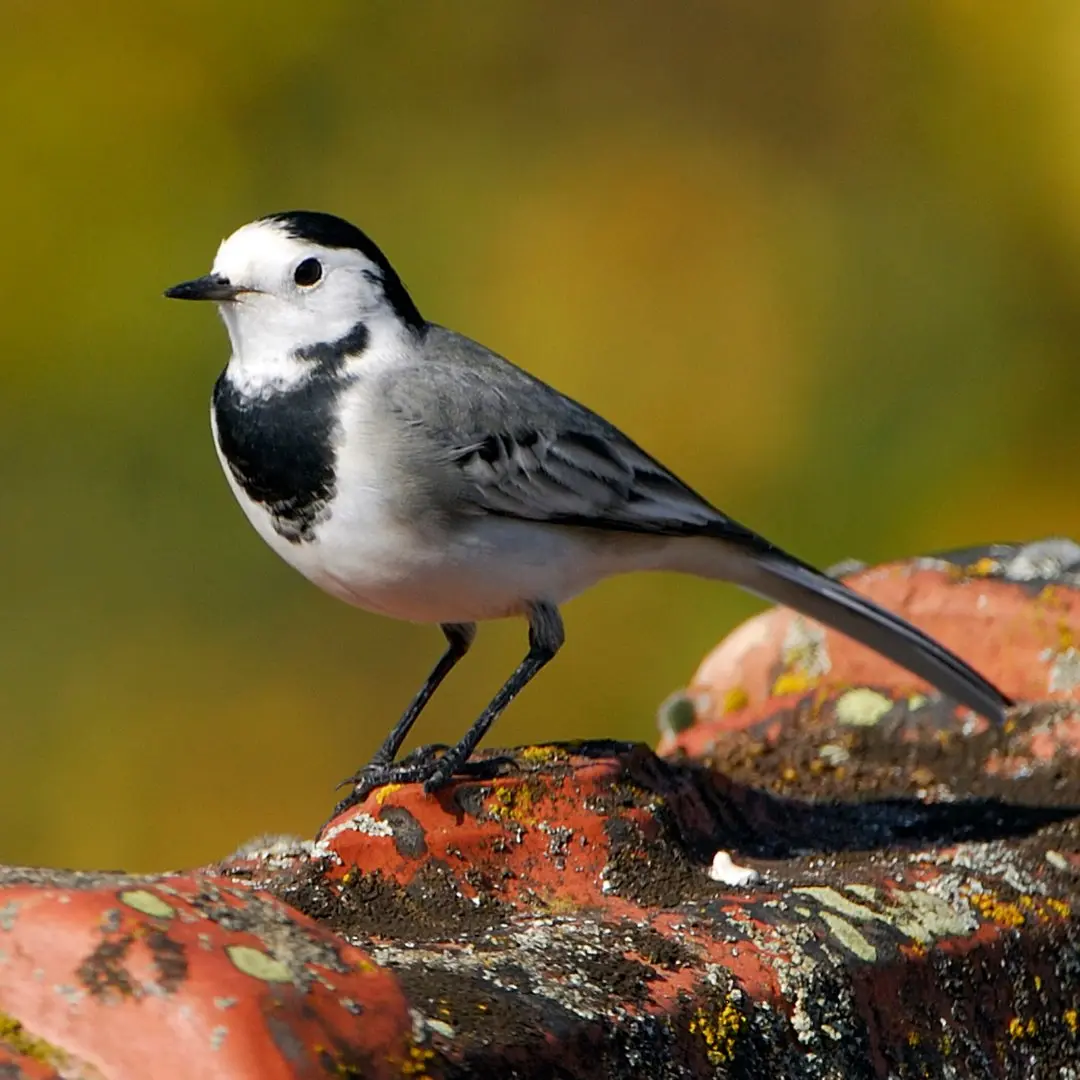
How does the White Wagtail behave?
The White Wagtail is often seen near wetlands and watercourses, where it actively searches for food. It has a characteristic jerky walking style, and its frequent tail-wagging has earned it the nickname "wagtail." Its flight is undulating, resembling the movements of a dragonfly, which adds to its charm when in motion.
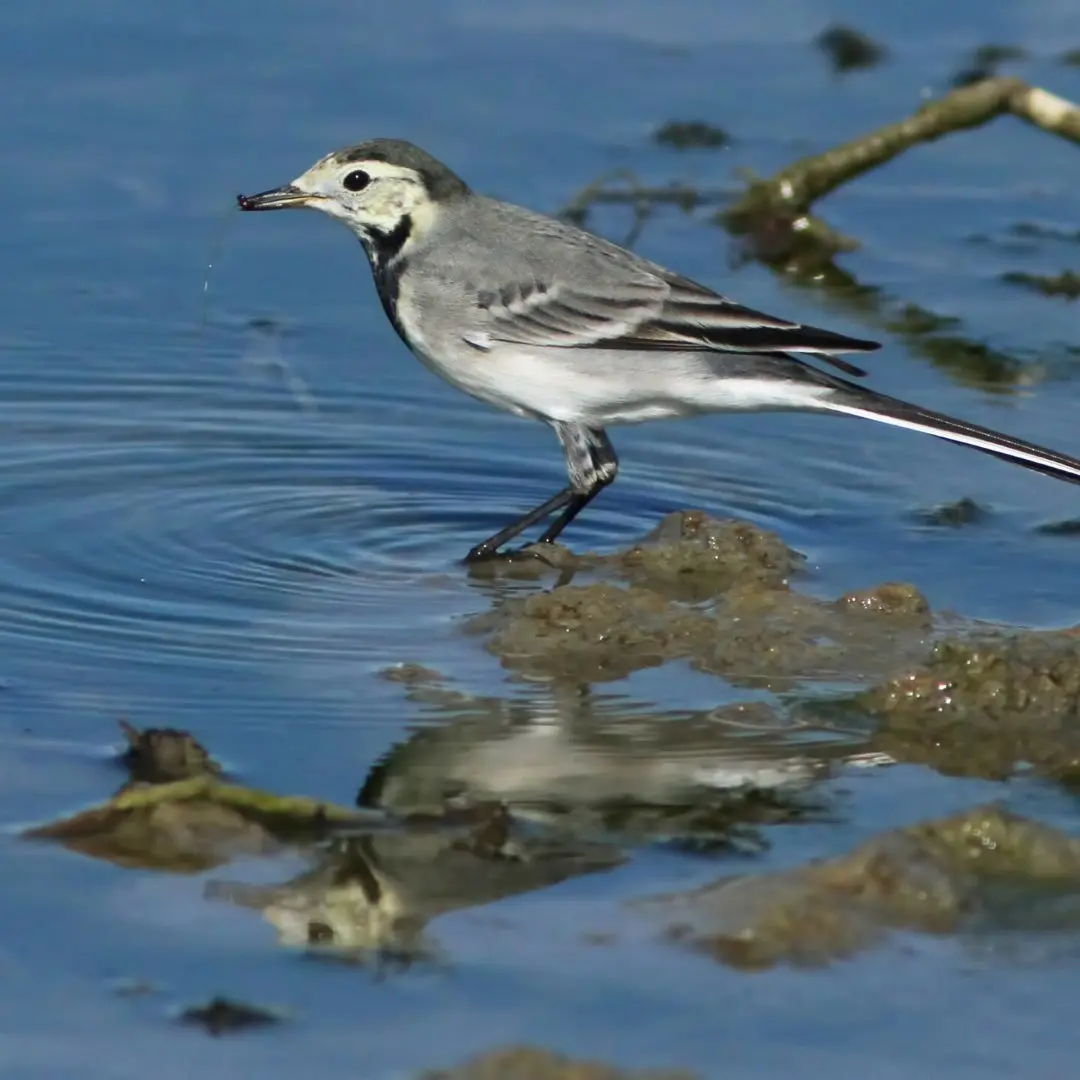
What are the White Wagtail's songs and calls?
The White Wagtail’s song is described as grating and monotonous, often heard in its natural habitats. It also produces sharp "tsi-lip" calls that make it easy to identify even when not in sight. These calls play a significant role in its social interactions and territorial behavior.
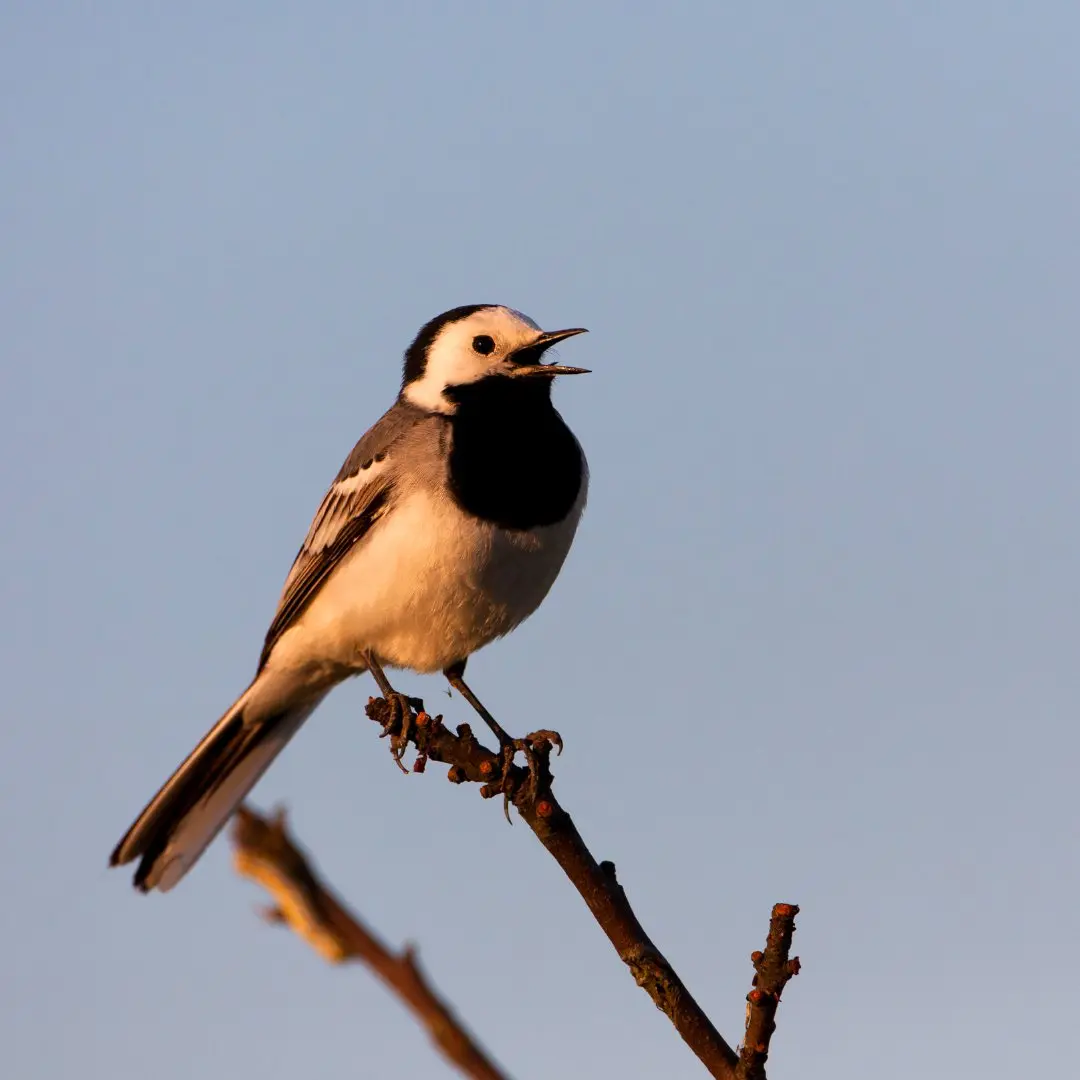
How does the White Wagtail reproduce?
The White Wagtail’s breeding season extends from April to August. During this time, it produces 2 to 3 broods per year, each consisting of 5 to 6 light gray eggs speckled with light brown. Its nests, built in cavities or crevices, are made from twigs, grass, and leaves. In gardens, it often nests in wall crevices, old swallow nests, or wood piles. Sometimes, it even uses open-fronted nest boxes to raise its young.
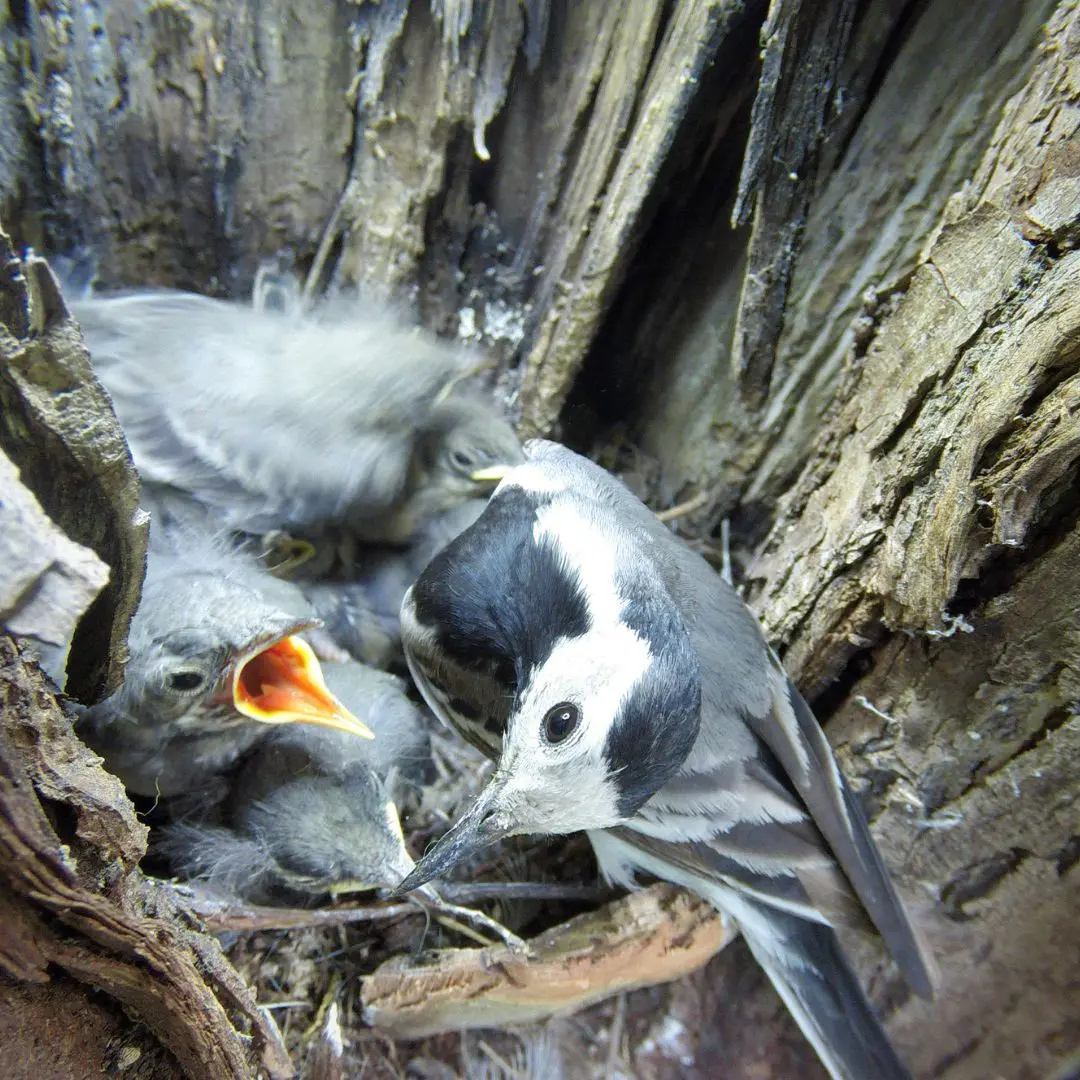
What does the White Wagtail eat?
The White Wagtail feeds primarily on small flies and other flying insects found near watercourses. This diet helps it thrive in wetland environments, where food sources are abundant. Its foraging style is active, often seen chasing insects on the ground or in mid-air.
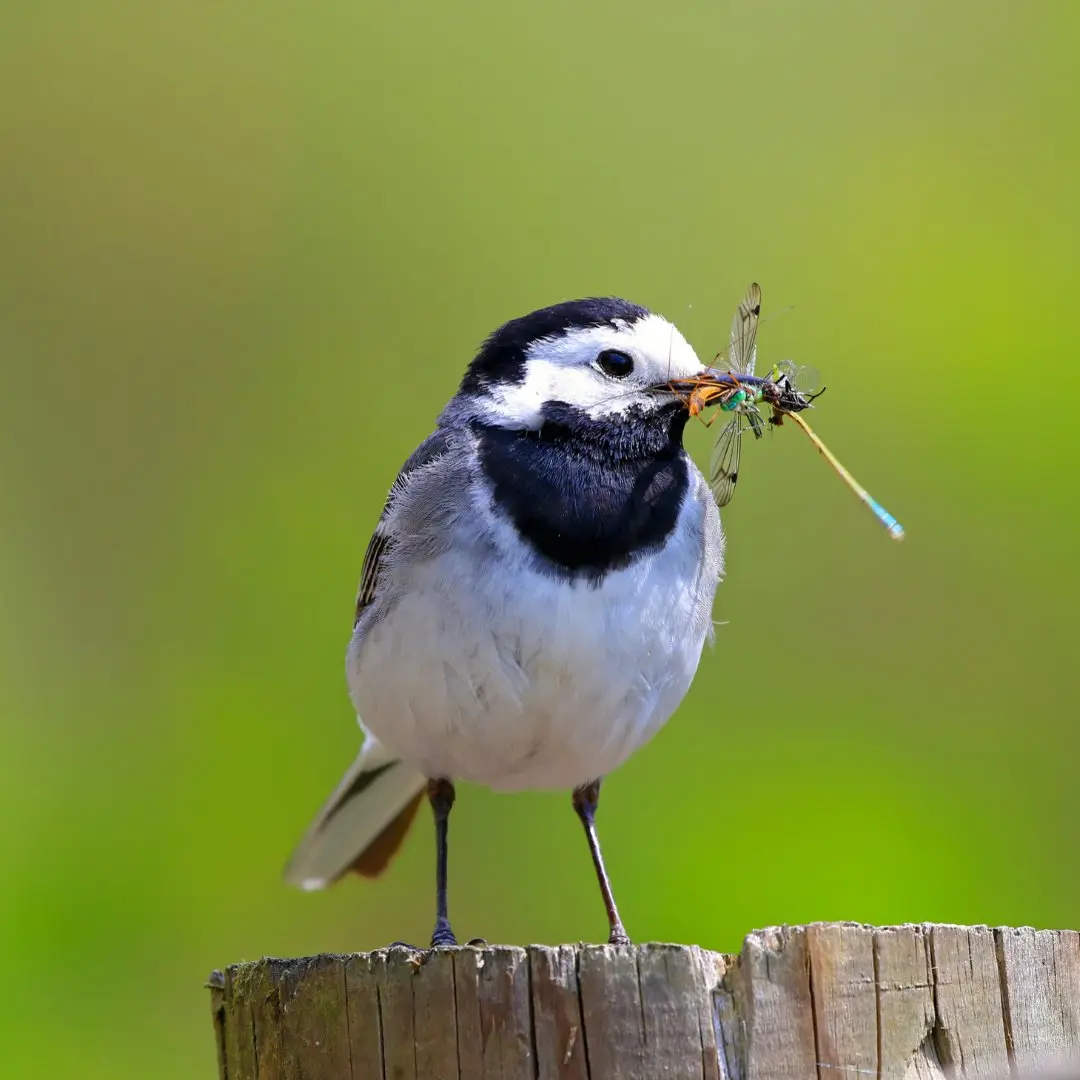
Where can you find the White Wagtail?
The White Wagtail is commonly found near watercourses and wetlands, but it also inhabits fields and urban areas. While some populations are sedentary, others are short-distance migrants. In winter, it often moves to Mediterranean regions, returning as early as March to its breeding grounds.
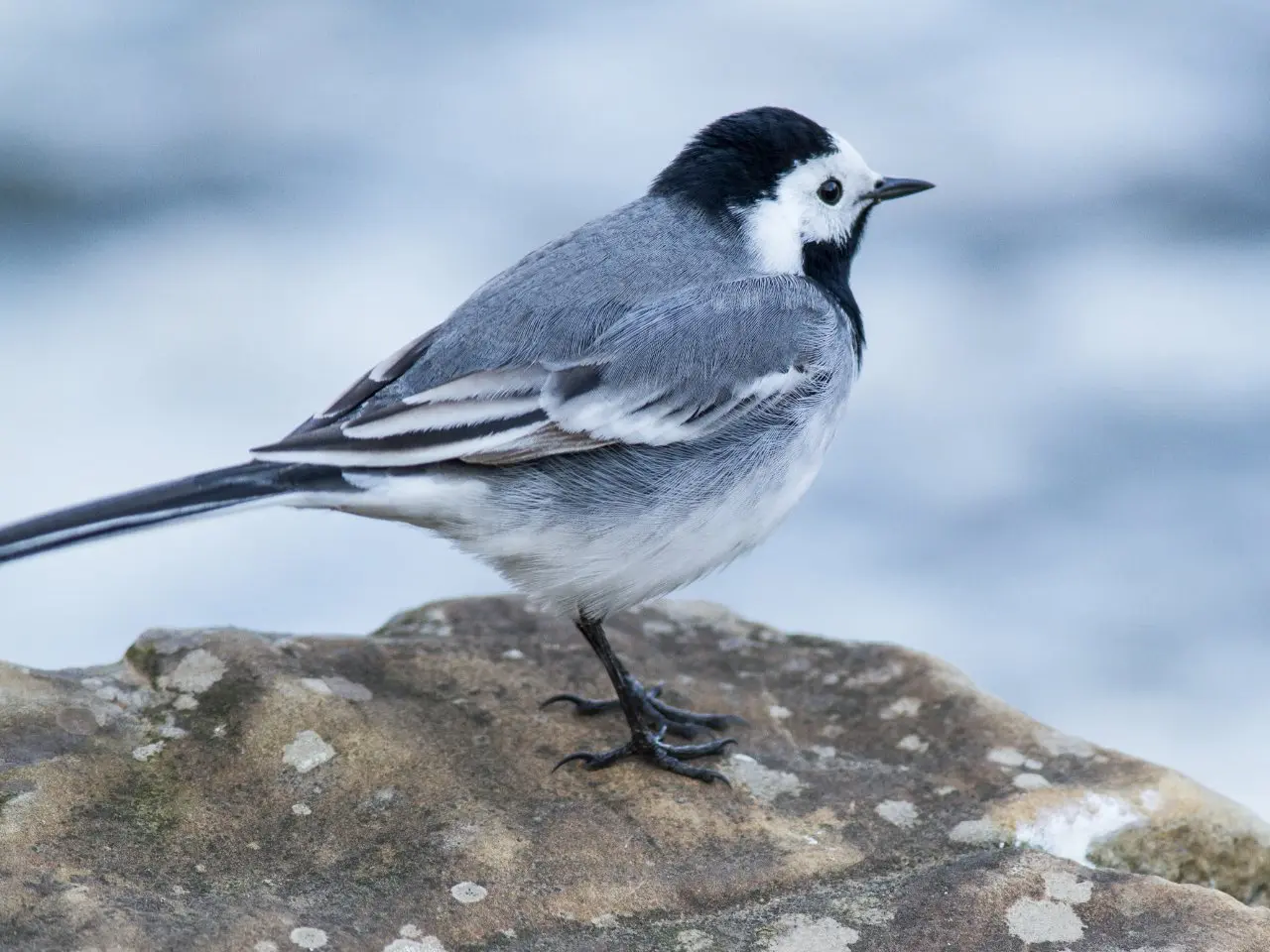
-


